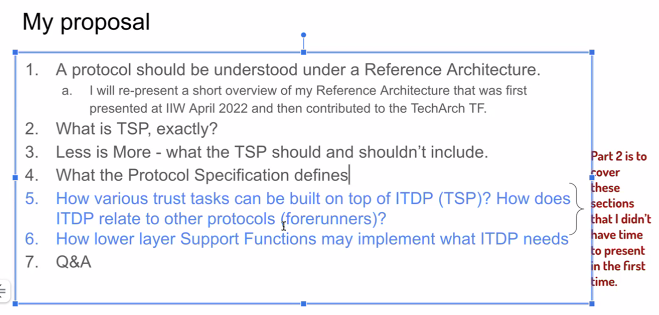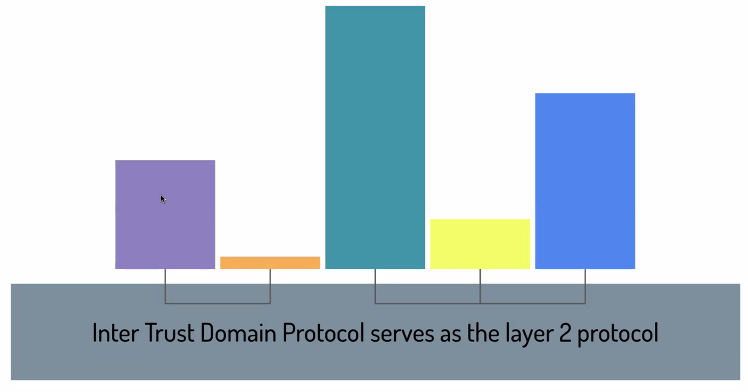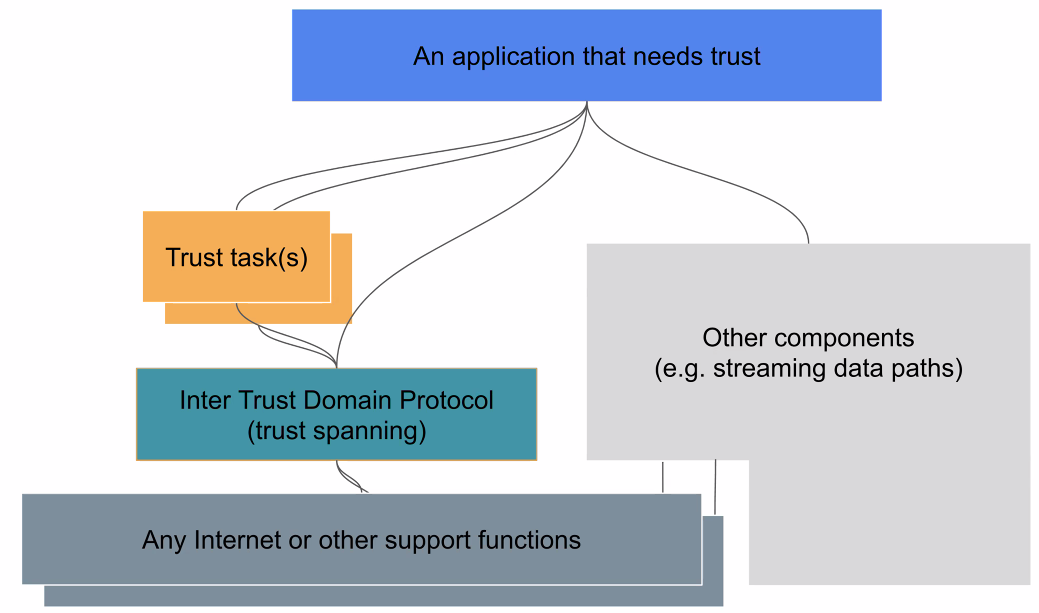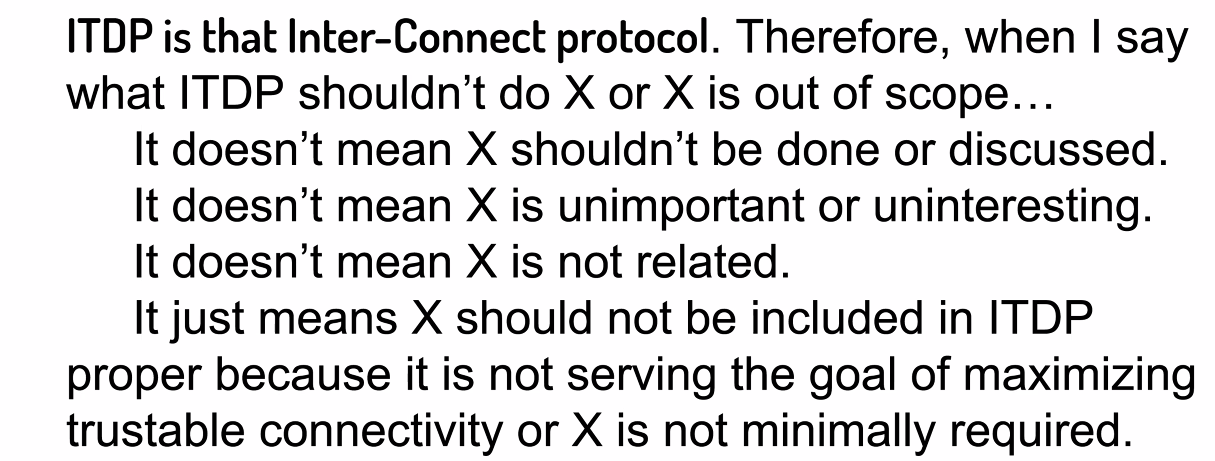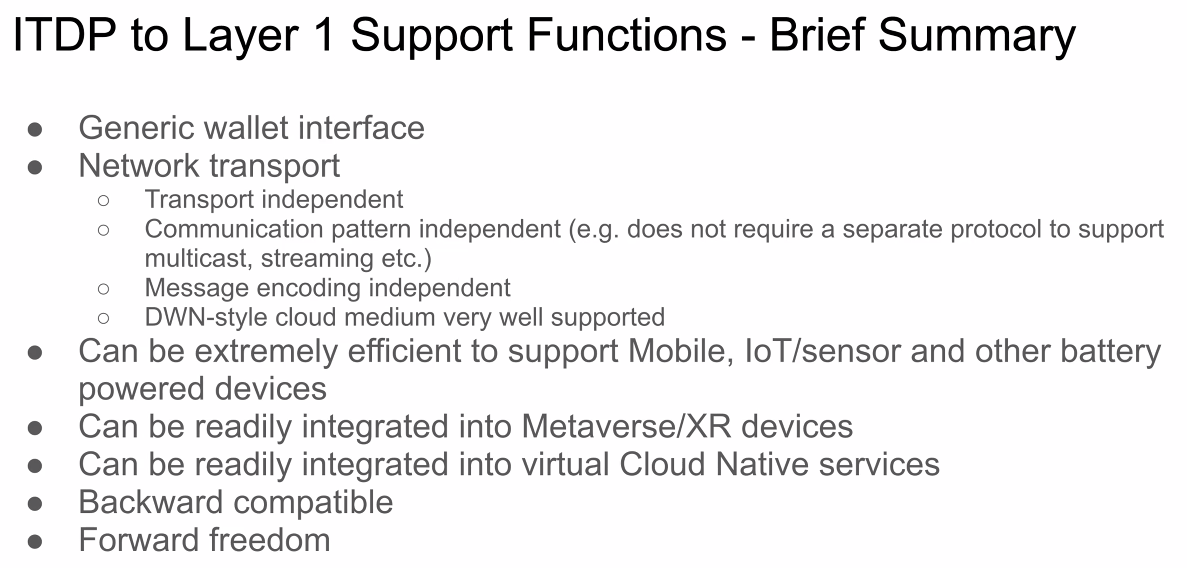Meeting Date & Time
This Task Force meets three out of every four Wednesdays (the fourth Wednesday is the Technology Stack WG plenary meeting). There are two meetings each Wednesday to serve different time zones:
- NA/EU meeting: 08:00-09:00 PT / 16:00-17:00 UTC
- APAC meeting: 18:00-19:00 PT / 02:00-03:00 UTC
See the Calendar of ToIP Meetings for exact meeting dates, times and Zoom links.
Zoom Meeting Recordings
- NA/EU Meeting: https://zoom.us/rec/share/_Rf0dGbj4M34vY2736n2ZJXe5hMS0gAshpq0QnvbZy0lCYOLOe-99Bx4Oii-caS4.uRj5aPAm6oWFMFsj
- APAC Meeting: https://zoom.us/rec/share/B0r0TgWH6L1DEYNpOjSOr39Y-hPVnaKyjRy3yepcjH074qC0Zjo4NOBy5HJ30B__.VbmPu3iaaem4Gcyx
Attendees
NA/EU:
- Drummond Reed
- Daniel Hardman
- Wenjing Chu
- Samuel Smith
- Darrell O'Donnell
- Alex Andrei
- Antti Kettunen
- Clare Nelson
- Daniel Bachenheimer
- Judith Fleenor
- Lance Byrd
- Mathieu Glaude
- Michal Pietrus
- Neil Thomson
- Rodolfo Miranda
- sankarshan
- Scott Perry
- Scott Whitmire
- Steve McCown
- Steven Milstein
- Subhasis Ojha
- P A Subrahmanyam
- Viky Manaila
- Vladimir Simjanoski
APAC:
- Drummond Reed
- Dima Postnikov
- Eric Drury
- Jo Spencer
- Wenjing Chu
- Samuel Smith
- Alex Tweeddale
- Daniel Bachenheimer
- Michael Herman
Agenda Items and Notes (including all relevant links)
| Time | Agenda Item | Lead | Notes |
| 3 min |
| Leads |
|
| 2 min | Review of previous action items | Leads |
|
| 5 mins | LAST CALL FOR PROPOSALS & prep for TSP Workshops | Drummond Reed | After today's Proposal #3 Part B from Wenjing Chu, we need to know if there are any other proposals in our proposal stage. If so, please speak up now. Secondly, Neil Thomson and others have suggested that as we move into our consolidation stage, we are going to need one or more "Special TSP Workshops" of at least 2-3 hour duration.
APAC: Jo Spencer asked if "the end of the proposal stage" will mean that we won't continue looking at other protocols. Drummond said that Wenjing's presentation today will address part of that. Michael Herman observed that each of the four proposals take a different approach to describing their vision and proposed design for the TSP — like describing four animals that all have four legs but are not the same animal (Jo Spencer said "camels and dromedaries as well as horses and zebras"). He pointed to this new Github discussion thread he started that asks questions about how we will proceed with the consolidation phase. Wenjing suggested that his presentation may partially answer Michael's question. |
| 40 mins | Proposal #3 Part B: Wenjing Chu | Wenjing Chu | Wenjing will present Part B of his Proposal #3. A handful of screenshots from his presentation are shown below. |
| 10 mins | Q&A on the above | All | NA/EU: Daniel Hardman asked what Wenjing meant by "backwards compatibility" for ITDP.
Clare asked about the mobile use case on slide 63 — would that include the mobile device? And how would that be implemented?
Darrell O'Donnell: Are we looking for backwards compatibility now (compatible to what?) Or are we planning for backwards compatibility? Neil Thomson: "Observation - a large part of interop is likely to be on governance and verifiable authority (initially) vs technical compatibility. For example, OIDC provides a non-DID identifier that OIDC is prepared to provide a verifiable authority (signing of the identifier) to providing backing -> VID" APAC: Jo Spencer: MATTR have been providing an OIDC <-> decentralised solution bridge for a long time. https://mattr.global/resources/articles/introducing-oidc-credential-provider/ Michael Herman: Slide 67- It appears the use of ITDP is limited to being a "systems interconnect" protocol ...and not a universal Trust Spanning Layer Protocol? Michael Herman: Slide 69 - don't we have to use or limit our designs to decentralized technologies and not have "black boxes" for wrapping centralized services?
Samuel Smith asked whether the assumption of greater "liquidity" in terms of trusted connections may not lead to the positive "pressure" that Wenjing refers to, because systems are vulnerable by virtue of the weakest system they are connected to.
Jo Spencer said that Wenjing's presentation made him think about the topic of synochronous, semi-synchronous, asynchronous, etc. and that that has not come up much in the proposals.
We closed the call by talking about how to proceed with the consolidation phase.
ACTION: All TSPTF MEMBERS: Consider your suggestions for the best way to proceed with the consolidation phase and then to post your suggestion(s) to the relevant Github discussion thread (or start a new one if needed). |
| Leads | Next week is the Technology Stack WG Plenary meeting, so our next meeting as a task force will be Wednesday April 5. The primary agenda item will be discussing TSP Workshops and how best to proceed with the consolidation stage. |
Screenshots/Diagrams (numbered for reference in notes above)
#1
#2
#3
#4
#5
#6
#7
Decisions
- None.
Action Items
- ACTION: All TSPTF MEMBERS: Consider your suggestions for the best way to proceed with the consolidation phase and then to post your suggestion(s) to the relevant Github discussion thread (or start a new one if needed).
